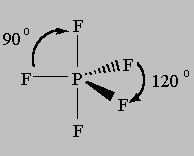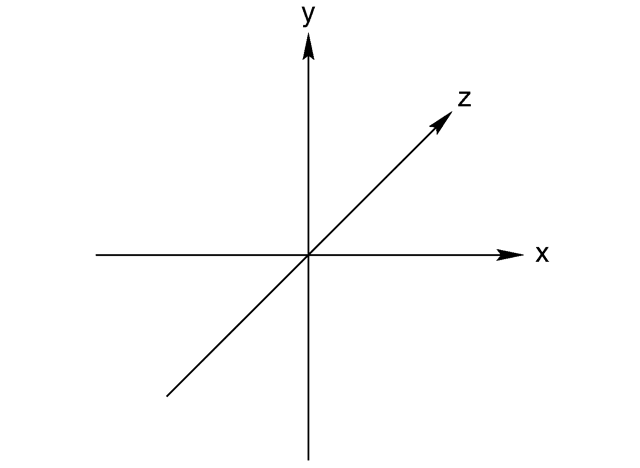VSEPR 2
The content that follows is the substance of General Chemistry Lecture 34. In this lecture we continue the discussion of VSEPR with those atoms that can exceed the octet.
When an element is in or beyond the 3rd period in the periodic table, it has the ability to exceed the octet rule, meaning it can make more than 4 bonds to other atoms. In VSEPR there are two structures that we need to know that fall into this category: AX5 and AX6.
AX5
As with earlier models the extended octet models start with bonds at all points around the central atom:

The EPG and MG for this model is called Trigonal Bipyramidal because drawing line from the axial (up-down) atoms to the equatorial (around the middle) atoms shows two 3 sided pyramids:

From here if we start to remove bonds and replace them with lone pairs, the EPG remains constant with 5 regions of electron density but the molecular geometry changes. Studies were done to determine where the first atom would be removed and it was determined that the structure would be most energetically favorable losing an equatorial atom first, second and then third.

See-Saw MG (AX4E), T-shaped MG (AX3E2)and then Linear (AX2E3)
AX6
For the last of the VSEPR models we will look at there are 6 peripheral atoms attached to the central atom.

The drawing of the positions of the atoms in this arrangement looks similar to the cartesian coordinate system:

With the peripheral atoms at each axis end.
As with the previous models the EPG and MG are named the same when all 6 atoms are bound to the central atom. In this case the structure is called Octahedral (8 sides).
When you remove atoms and leave lone pairs behind, the following structures appear:
 |
 |
Square Pyramidal (AX5E) |
Square Planar (AX4E2) |
From this point on the molecular geometry become T-shaped (AX3E3) and then linear from there on. Removal of the first bonded atom can come from anywhere in the structure as all of the placements are initially equivalent. After removal of the first however, the next removal will be exactly opposite that position.